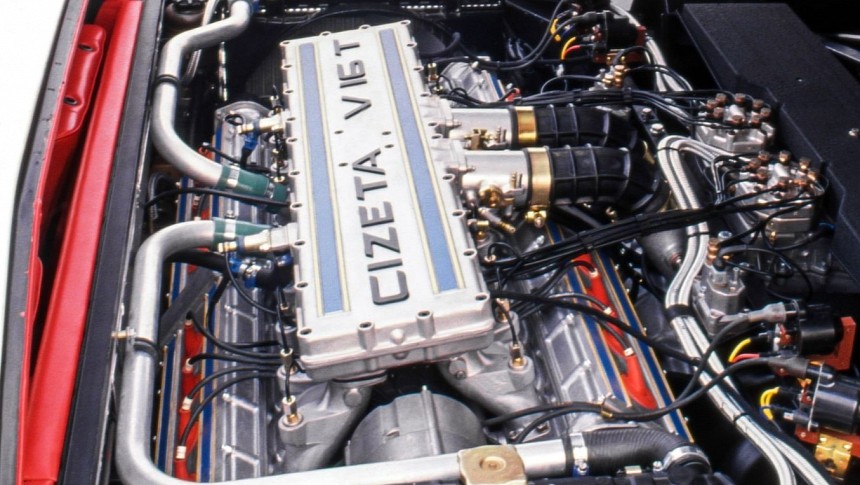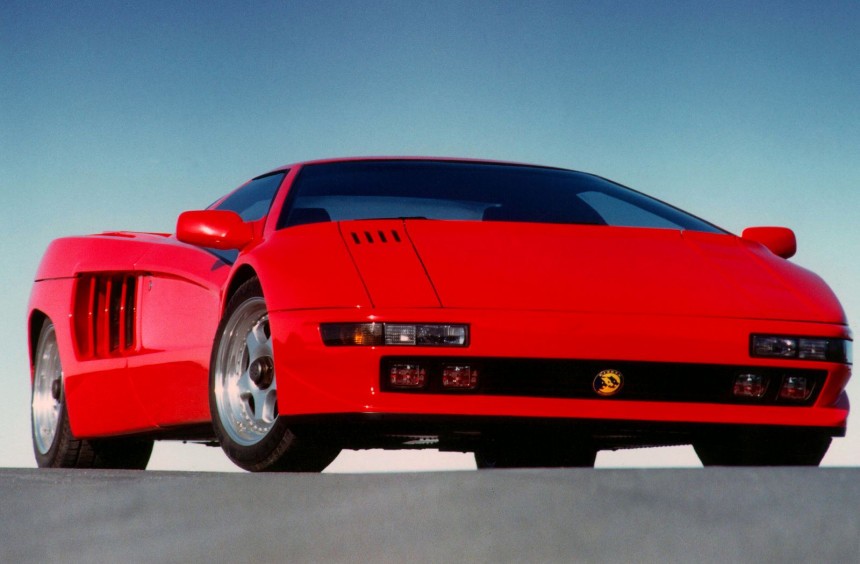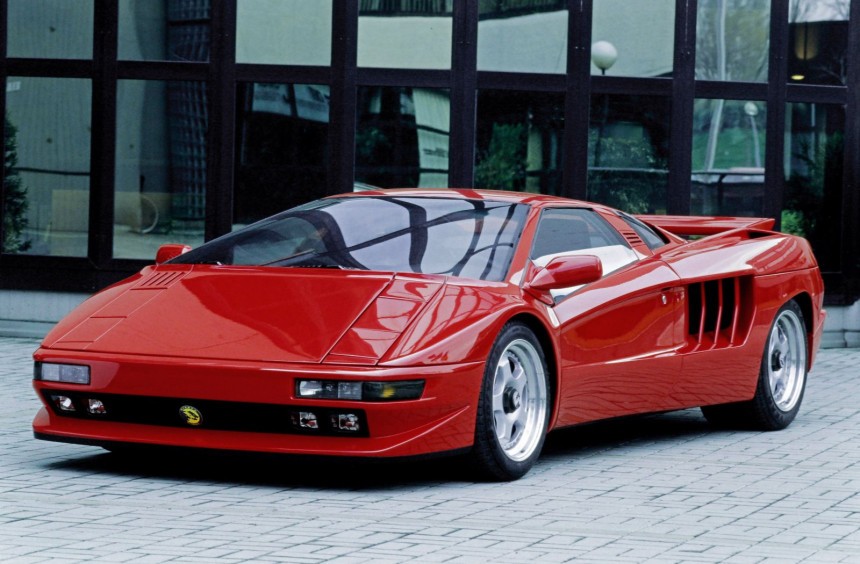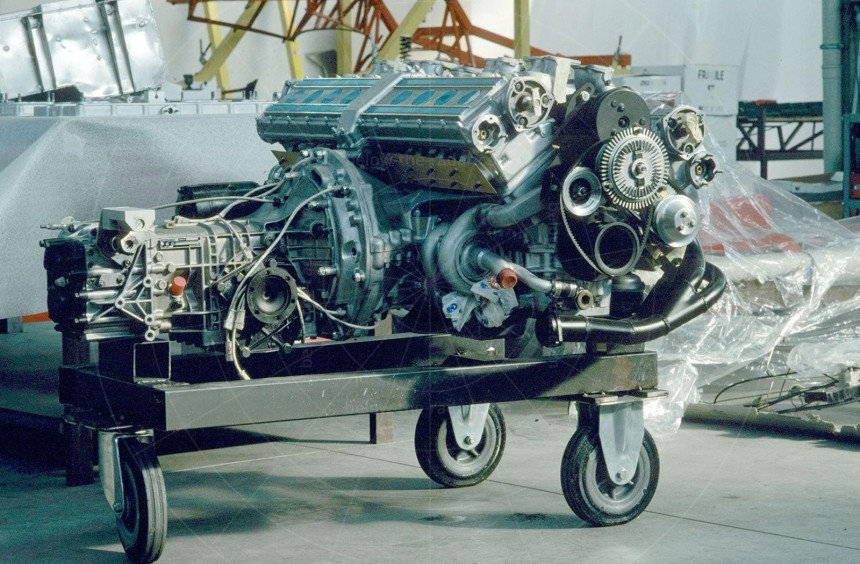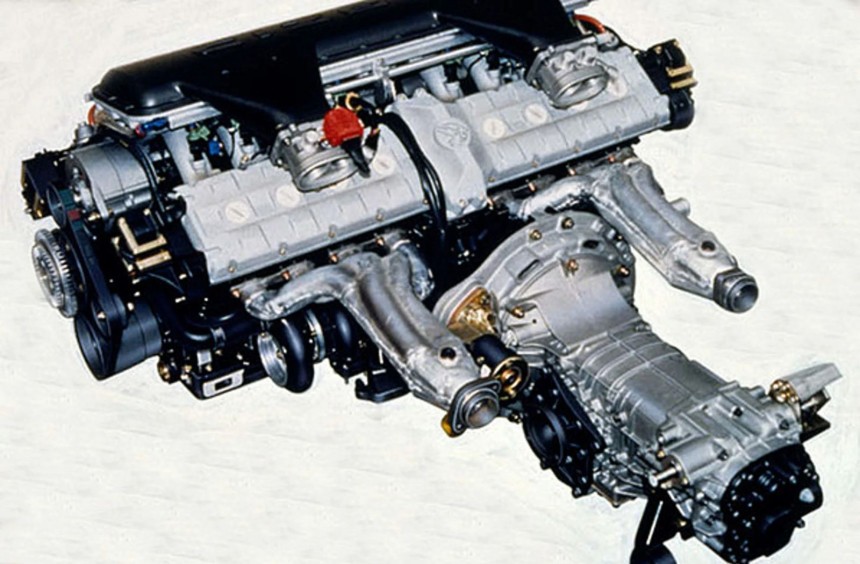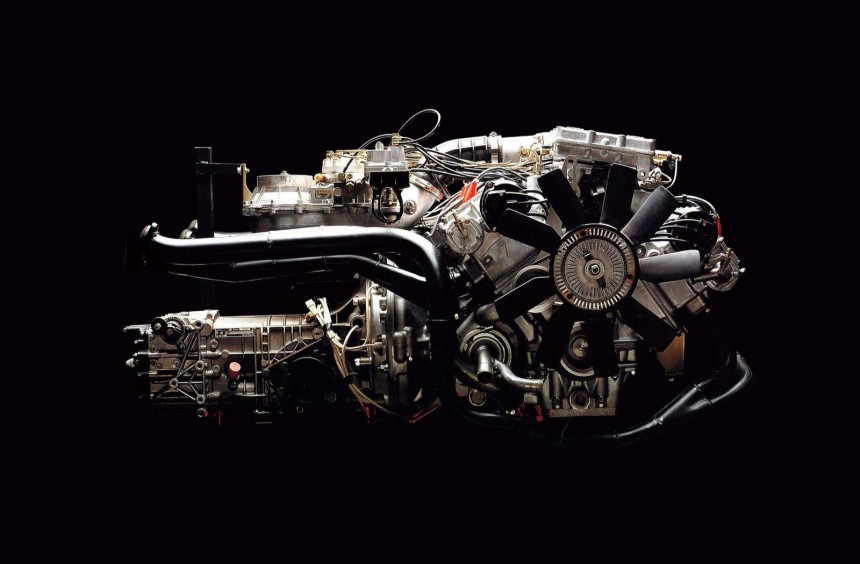The Cizeta V16T was the Lamborghini Diablo's crazy cousin who tried to take over the supercar segment with the world's first transversely-mounted V16 engine.
The 70s and 80s were two exciting decades that gave us some of the most iconic supercars ever built, like the Lamborghini Countach and Diablo or the Ferrari F40 and its successor, the Formula 1-engined F50.
But, if you're like me and have a soft spot for automotive oddities, one of the most memorable supercars produced back then was the Cizeta V16T.
Sure, it was never as famous as the Italian legends mentioned above. However, it went down in automotive history as the first (and only) supercar powered by a V16 engine mounted sideways behind the passenger compartment.
Born in 1939, Claudio Zampolli grew up in Modena, Italy, the supercar capital of the world. As a kid, he used to build his own toy cars, which led him to pursue a career in the automotive industry. After earning an engineering degree in Switzerland and spending some time running a repair shop, he returned home to Italy, joining newcomers Lamborghini.
Though he wanted to be part of the engineering department, Zampolli's skills behind the wheel earned him a test driver job. He spent nearly a decade working under Bob Wallace on the Miura project, then, in the early 1970s, he was sent to the US to oversee the manufacturer's dealership network.
Unfortunately, the energy crisis that led to the extinction of muscle cars also killed Lamborghini's US dealerships. Nevertheless, Zampolli chose to stay in California, where he opened a repair shop for Lamborghinis, Ferraris, and other Italian supercars. For the next decade, Zampolli's shop became the place where wealthy supercar owners – including Hollywood's finest – went to get their rides serviced or upgraded.
But the Italian never gave up on his biggest dream: building his own supercar. Thanks to his connections in California, Zampolli made his dream come true in 1988 when he founded Cizeta Automobili and began developing the V16T with a team of former Lamborghini colleagues.
Contrary to popular belief, the Cizeta V16T, unveiled in late-1988, was not a modified Diablo but a distinctly bespoke supercar. It was built around a custom Chromoly steel tube chassis that only shared a few components with existing Lamborghini models, such as the Brembo braking system.
The bodywork was designed by Marcello Gandini – the man behind the Miura and Countach – who Lamborghini had dismissed after creating the first Diablo prototype. For the V16T, Gandini opted for a similar design, which is why the Cizeta looked much like the Diablo, particularly when viewed from the front.
Styling aside, what made the V16T the most outrageous supercar of its era was the mid-mounted V16 engine.
Claudio Zampolli wanted his car to stand out from the rest, so he instructed lead engineer Oliviero Pedrazzi to design a spectacular engine.
Pedrazzi figured out that a V16 would work wonders for the car's publicity, but with limited funds to build one from scratch, they decided to fuse two existing V8s borrowed from the Lamborghini Urraco.
The engineer designed a custom all-aluminum block that housed two crankshafts geared into a single output shaft. The cranks, conrods, and pistons were similar to those found in the Lamborghini V8 but were slightly reengineered for higher strength.
On top of the block, Pedrazzi used two separate cylinder heads, both sourced from Lamborghini. Unlike other bespoke components, the heads were identical to those used for the Urraco V8. Each featured four valves per cylinder, and two overhead cams, which meant that the V16 had 64 valves and four cams. It also used two Bosch K-Jetronic fuel injection systems to feed the 32 inlet valves, but a single ECU controlled the firing order.
Despite its sixteen cylinders, the engine was relatively compact, displacing just 6.0 liters. To put it into perspective, virtually all of the big blocks that made muscle cars legendary during the sixties and seventies had displacements that exceeded 7.0 liters.
Since it featured two cranks, the most effective way to harness the power and maintain good weight balance was to devise a unique gearing system in the middle of the block. It featured a small but sturdy output shaft linked to a ZF S5-42 five-speed manual transaxle gearbox.
With the entire powertrain forming a T shape (hence the T in the car's name), the engine was mounted transversely onto the chassis, making it the first and only production V16 unit placed in this position.
Capable of revving up to 8,500 rpm, the Cizeta V16 was rated at 540 hp and 400 lb-ft (540 Nm). Those figures are not particularly impressive today, but back in 1991, when production of the V16T commenced, it was one of the world's most powerful naturally aspirated engines.
It helped the supercar accelerate to 60 mph (97 kph) from a standstill in 4 seconds and reach an impressive top speed of 204 mph (328 kph).
Unfortunately for Zampolli, his Cizeta V16T never became commercially successful. While many wealthy enthusiasts showed interest after the unveiling of the initial prototype in 1988, by the time production began, global financial turmoil meant that few were willing to spend big bucks on a supercar that didn't don Ferrari or Lamborghini badges.
Ultimately, Cizeta sold around ten examples during the initial production run that ended in 1995. According to multiple sources, three or four additional V16Ts were completed from 1995 to 2003, including a unique spyder-bodied unit.
While the supercar failed to become an automotive legend, its outrageous engine earned a place in the history books as the only transversely mounted V16 and the last sixteen-cylinder to enter production.
However, it was not the first. That distinction goes to the Cadillac V16, which was developed in the second part of the 1920s, hitting the market in 1930 with the ultra-luxurious Cadillac Sixteen. In modern times, several other carmakers experimented with this configuration, but only Cizeta's epic unit made it into production.
In the YouTube video below by ispeedonthe405, you see Zampolli revving up the engine as Sony engineers record its hair-rasing sound for the Gran Turismo 5 video game.
But, if you're like me and have a soft spot for automotive oddities, one of the most memorable supercars produced back then was the Cizeta V16T.
Sure, it was never as famous as the Italian legends mentioned above. However, it went down in automotive history as the first (and only) supercar powered by a V16 engine mounted sideways behind the passenger compartment.
A former Lamborghini test driver's dream come true
Though he wanted to be part of the engineering department, Zampolli's skills behind the wheel earned him a test driver job. He spent nearly a decade working under Bob Wallace on the Miura project, then, in the early 1970s, he was sent to the US to oversee the manufacturer's dealership network.
Unfortunately, the energy crisis that led to the extinction of muscle cars also killed Lamborghini's US dealerships. Nevertheless, Zampolli chose to stay in California, where he opened a repair shop for Lamborghinis, Ferraris, and other Italian supercars. For the next decade, Zampolli's shop became the place where wealthy supercar owners – including Hollywood's finest – went to get their rides serviced or upgraded.
But the Italian never gave up on his biggest dream: building his own supercar. Thanks to his connections in California, Zampolli made his dream come true in 1988 when he founded Cizeta Automobili and began developing the V16T with a team of former Lamborghini colleagues.
One of the most outrageous supercars of the 1990s
The bodywork was designed by Marcello Gandini – the man behind the Miura and Countach – who Lamborghini had dismissed after creating the first Diablo prototype. For the V16T, Gandini opted for a similar design, which is why the Cizeta looked much like the Diablo, particularly when viewed from the front.
Styling aside, what made the V16T the most outrageous supercar of its era was the mid-mounted V16 engine.
When a V8, V10, or V12 is just too maintsteam
Pedrazzi figured out that a V16 would work wonders for the car's publicity, but with limited funds to build one from scratch, they decided to fuse two existing V8s borrowed from the Lamborghini Urraco.
The engineer designed a custom all-aluminum block that housed two crankshafts geared into a single output shaft. The cranks, conrods, and pistons were similar to those found in the Lamborghini V8 but were slightly reengineered for higher strength.
On top of the block, Pedrazzi used two separate cylinder heads, both sourced from Lamborghini. Unlike other bespoke components, the heads were identical to those used for the Urraco V8. Each featured four valves per cylinder, and two overhead cams, which meant that the V16 had 64 valves and four cams. It also used two Bosch K-Jetronic fuel injection systems to feed the 32 inlet valves, but a single ECU controlled the firing order.
A transversely-mounted monster
Since it featured two cranks, the most effective way to harness the power and maintain good weight balance was to devise a unique gearing system in the middle of the block. It featured a small but sturdy output shaft linked to a ZF S5-42 five-speed manual transaxle gearbox.
With the entire powertrain forming a T shape (hence the T in the car's name), the engine was mounted transversely onto the chassis, making it the first and only production V16 unit placed in this position.
Capable of revving up to 8,500 rpm, the Cizeta V16 was rated at 540 hp and 400 lb-ft (540 Nm). Those figures are not particularly impressive today, but back in 1991, when production of the V16T commenced, it was one of the world's most powerful naturally aspirated engines.
It helped the supercar accelerate to 60 mph (97 kph) from a standstill in 4 seconds and reach an impressive top speed of 204 mph (328 kph).
It wasn't the first V16 engine to reach production
Ultimately, Cizeta sold around ten examples during the initial production run that ended in 1995. According to multiple sources, three or four additional V16Ts were completed from 1995 to 2003, including a unique spyder-bodied unit.
While the supercar failed to become an automotive legend, its outrageous engine earned a place in the history books as the only transversely mounted V16 and the last sixteen-cylinder to enter production.
However, it was not the first. That distinction goes to the Cadillac V16, which was developed in the second part of the 1920s, hitting the market in 1930 with the ultra-luxurious Cadillac Sixteen. In modern times, several other carmakers experimented with this configuration, but only Cizeta's epic unit made it into production.
In the YouTube video below by ispeedonthe405, you see Zampolli revving up the engine as Sony engineers record its hair-rasing sound for the Gran Turismo 5 video game.
